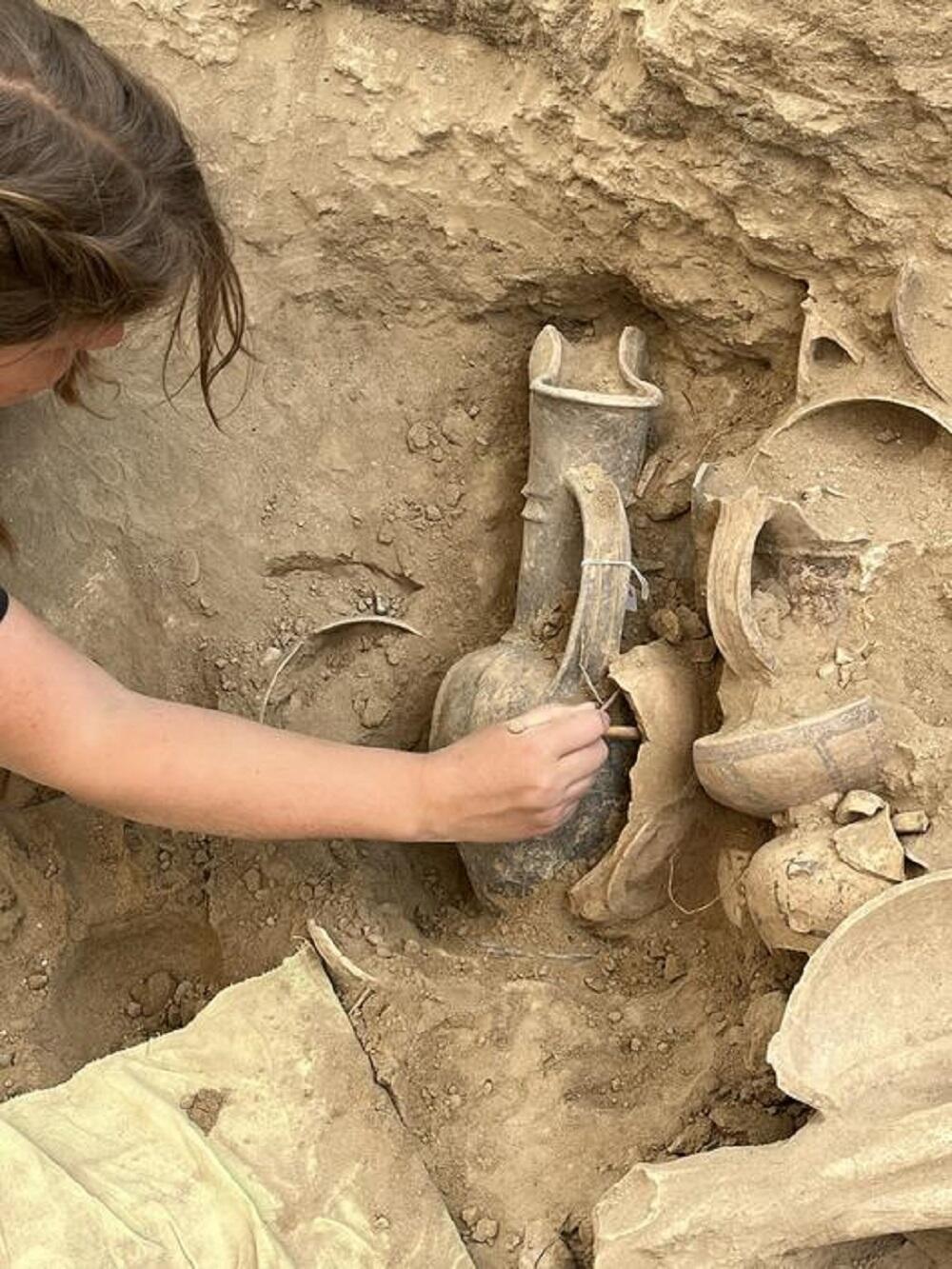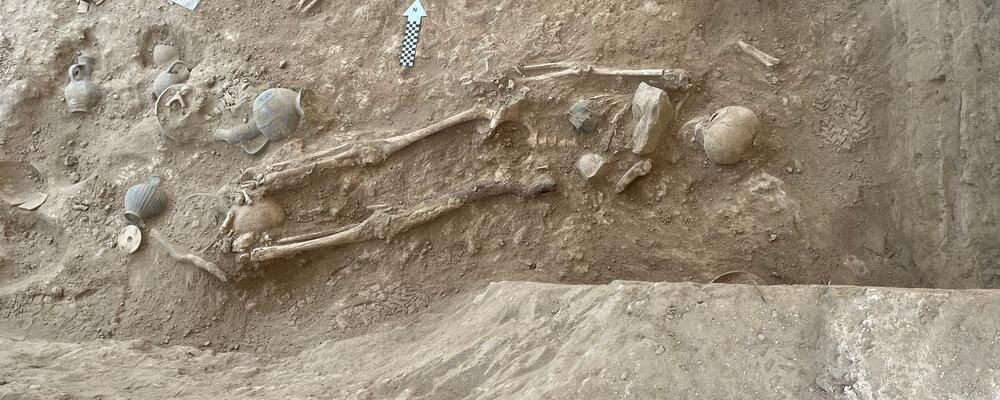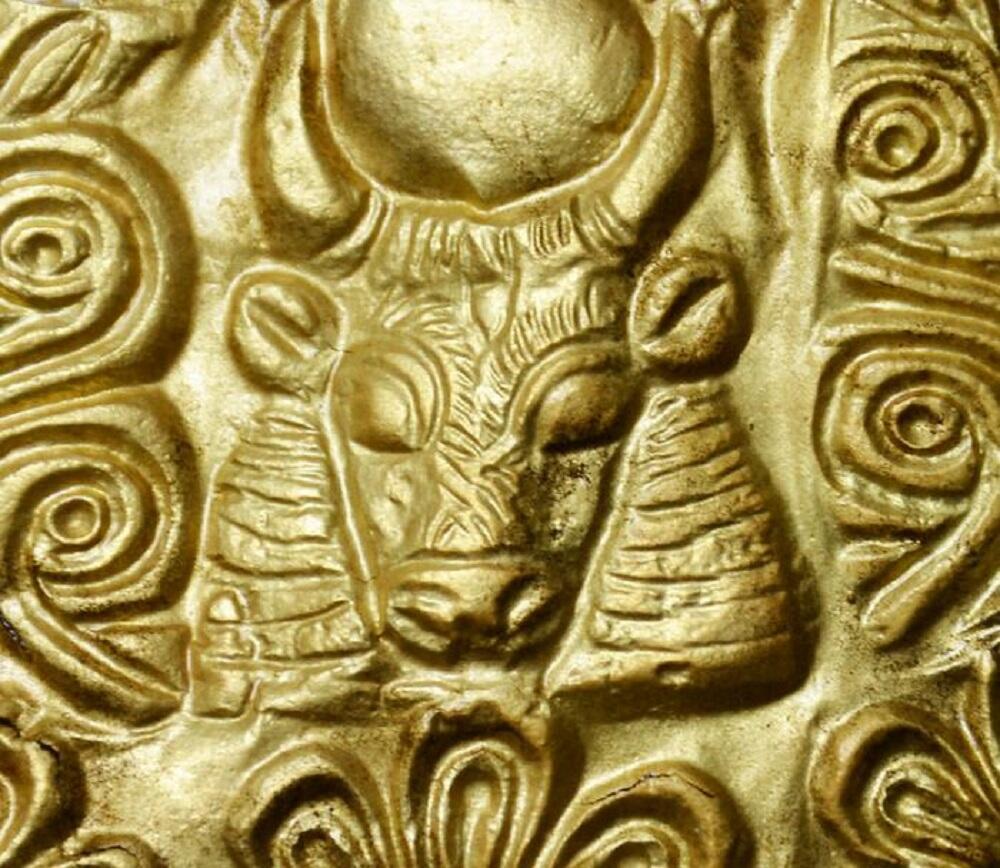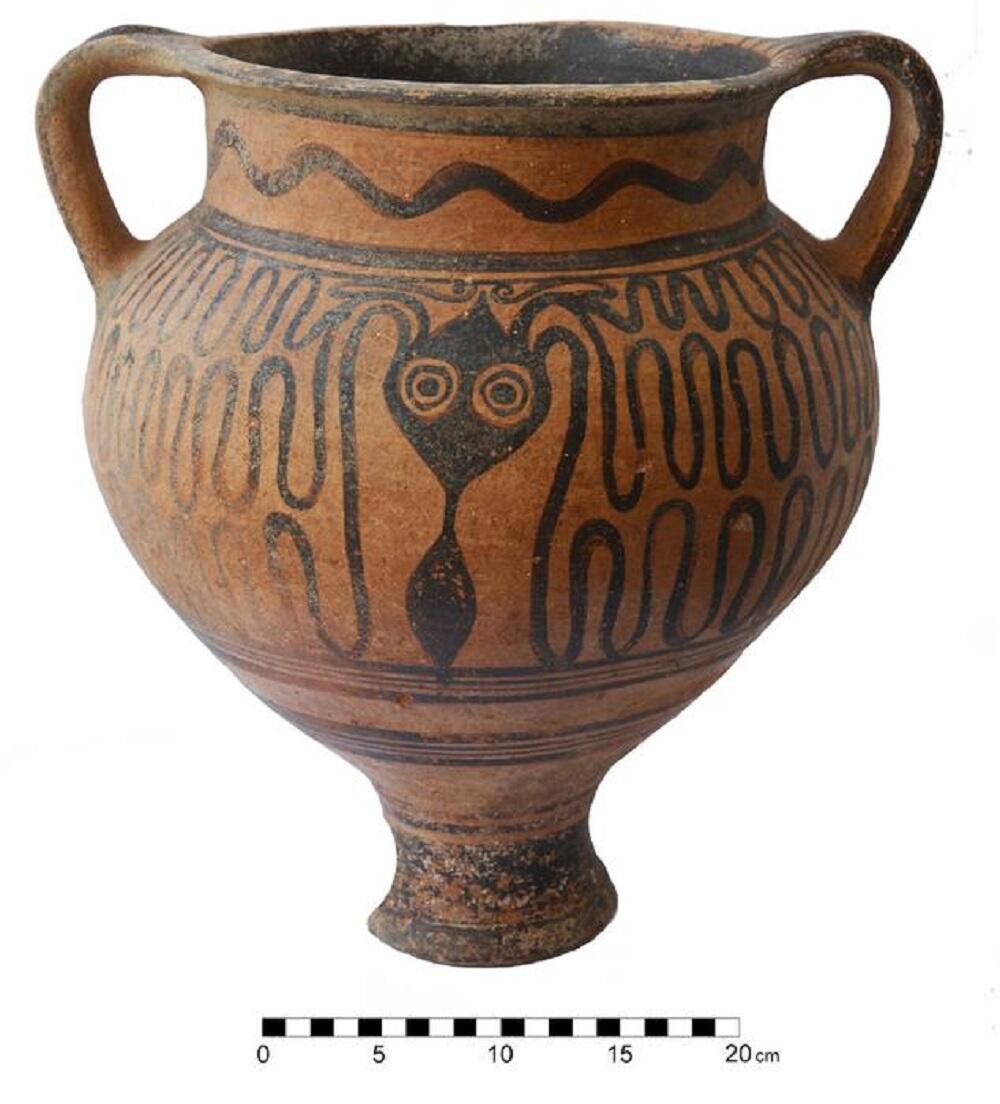An archaeological expedition from the University of Gothenburg recently discovered several tombs outside one of the most important urban centers of the ancient Near East during the Bronze Age, Hala Sultan teke located in Cyprus.
More stories:
The findings indicated that it was one of the wealthiest material cultures ever found in the Mediterranean region, as the valuable burial objects found suggested that the individuals were part of the ruling elite. The city was a center for copper trade between 1500-1300 BCE.
“Considering the richness of the grave goods, it is a reasonable assumption that these were royal tombs, even though we do not know much about the form of government practiced in the city at the time," said Prof. Peter Fischer, an archaeology lecturer at the University of Gothenburg, who led the expedition.
The tombs, located outside the Bronze Age city’s limits, which covered an area of 500 dunams, consisted of underground chambers accessed through a narrow passage descending straight from the surface and underground.
The chambers varied in size and measured up to 4-5 meters. The Swedish Söderberg Archaeological Expedition, which has been excavating at Hala Sultan teke since 2010, previously discovered a burial chamber with valuable grave goods.
However, what distinguishes the new findings is the enormous quantity and high quality of the artifacts found. "We found more than 500 complete artifacts distributed among two tombs. Many of the artifacts consist of precious metals, gems, ivory, and high-quality ceramics," Prof. Fischer added.
In fact, about half of the discovered artifacts were imported from nearby civilizations. Gold and ivory came from Egypt, while precious gemstones such as lapis lazuli and carnelian in dark red and turquoise-blue colors, were imported from Afghanistan, India, and the Sinai Peninsula, respectively. Additionally, tombs also contained amber artifacts originating from the Baltic region.
The tombs were discovered using magnetometer devices, which can help in detecting objects and structures up to two meters below the surface. Using this technology, archaeological sites can be located more easily.
By comparing the area where broken pottery had been unearthed through farming activities with the magnetometer map, the excavation team located large cavities below the surface, leading them to further investigate the area and discover the hidden tombs.
A number of well-preserved skeletons in the tombs include skeletal remains surrounded by dozens of ceramic vessels, jewelry, and a polished round bronze mirror. The remains of a one-year-old girl were discovered, along with a ceramic toy found nearby.
Prof. Fischer said that several individuals, both men and women, wore diadems—a type of crown that has been used since the days of the First Temple period. Some of them had high-quality necklaces, likely created in ancient Egypt during the 18th Dynasty, under the reigns of pharaohs such as Thutmose III, Amenhotep IV (known as Akhenaten), and his wife Nefertiti.
Sculpted reliefs of bulls, deer, lions, and flowers adorned the crowns, while most of the ceramic vessels came from areas close to Greece. The expedition members also found pots from Turkey, Syria, Israel, and Egypt.
The grave goods also included bronze weapons, some of which were inlaid with ivory, as well as a gold-lined seal made from the hard mineral hematite, with inscriptions of gods and rulers.
Prof. Fischer explained that the buried individuals’ significant wealth came from producing copper. Nearby copper mines yielded copper ore, which was refined in the city. The metal was then exported in large quantities to neighboring civilizations.
Copper held great importance as a commodity since it could be combined with tin and thus produce bronze, a durable metallic alloy after which the Bronze Age is named.





